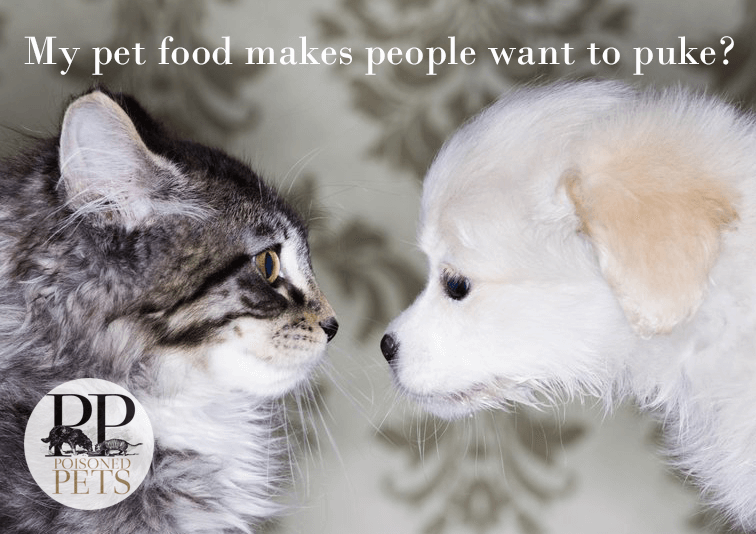A pet food rendering plant in Quebec has residents reaching for the barf bag every time they go out of doors, describing the stench as something akin to “vomit times ten.” Children living near the rendering plant can’t play outside without being overpowered by the nauseating, purifying stench. Children run inside saying, “Mommy, daddy, it feels like I’m going to throw up.”
People who are unfortunate enough to live near the Sanimax rendering plant, which collects and processes animals and meat by-products, are horrified to imagine what kind of pet food ingredients are made inside the Hellish smelling factory. Therefore, most of the people who live near Sanimax try to avoid buying pet food that might have rendered pet food ingredients in it.
When you visit Sanimax’s website you might be charmed by their sales pitch where they proudly offer “premium pet food ingredients for winning results,” — for “discerning pet owners” — because they understand “how crucial food safety is in the pet food world.” Sanimax claims their customers keep coming back because of their “premium quality.”
Some suggest Sanimax should build an airtight garage and install special filters on delivery trucks to keep in the smell. Others just want them gone. Unfortunately, it’s just not that simple. Because as long as people eat meat, poultry and fish, there will be remains that will need to be processed somehow. Rendering is one of the methods of sanitizing otherwise putrid, inedible animal by-products and animal waste. In fact, rendering plants offer a service for the agriculture industry that has to process millions of pounds of slaughterhouse waste that would otherwise be landfilled if that were even allowed.
Renderers like Sanimax are no different from the hundreds of other rendering plants just like it across America processes roughly 25 million tons of animal byproducts each year in the US. In fact, most of the ingredients in pet food and animal feed today typically come from rendering plants like Sanimax.
But if consumers don’t want rendered ingredients in their pet’s food, they need to try and avoid ingredients such as meat meal, meat and bone meal, poultry meal, poultry byproduct meal and fish meal, animal digest or animal fat – because chances are, they originated from a rendering plant.
I don’t have a problem with renderers; really, I don’t. In fact, I think as long as people continues to consume meat, poultry and fish, they should be grateful for what renderers do. At this point, there isn’t a better way of disposing of vast quantities of animal remains from an ecological standpoint. I do, however, object to pet food manufacturers dressing up the puke-making garbage that comes from rendering plants by wrapping it up in a pretty package, and calling it a nutritious, wholesome and complete pet food.
The video (below), although not Sanimax, is a typical rendering plant (this one happens to be in California, called the Sacramento Rendering Company) and it should give you the general idea of what goes on inside a facility that processes dead animals:
Find out more: FDA on rendered animal feed ingredients; Compliance policy guide


Comments (6) Write a comment